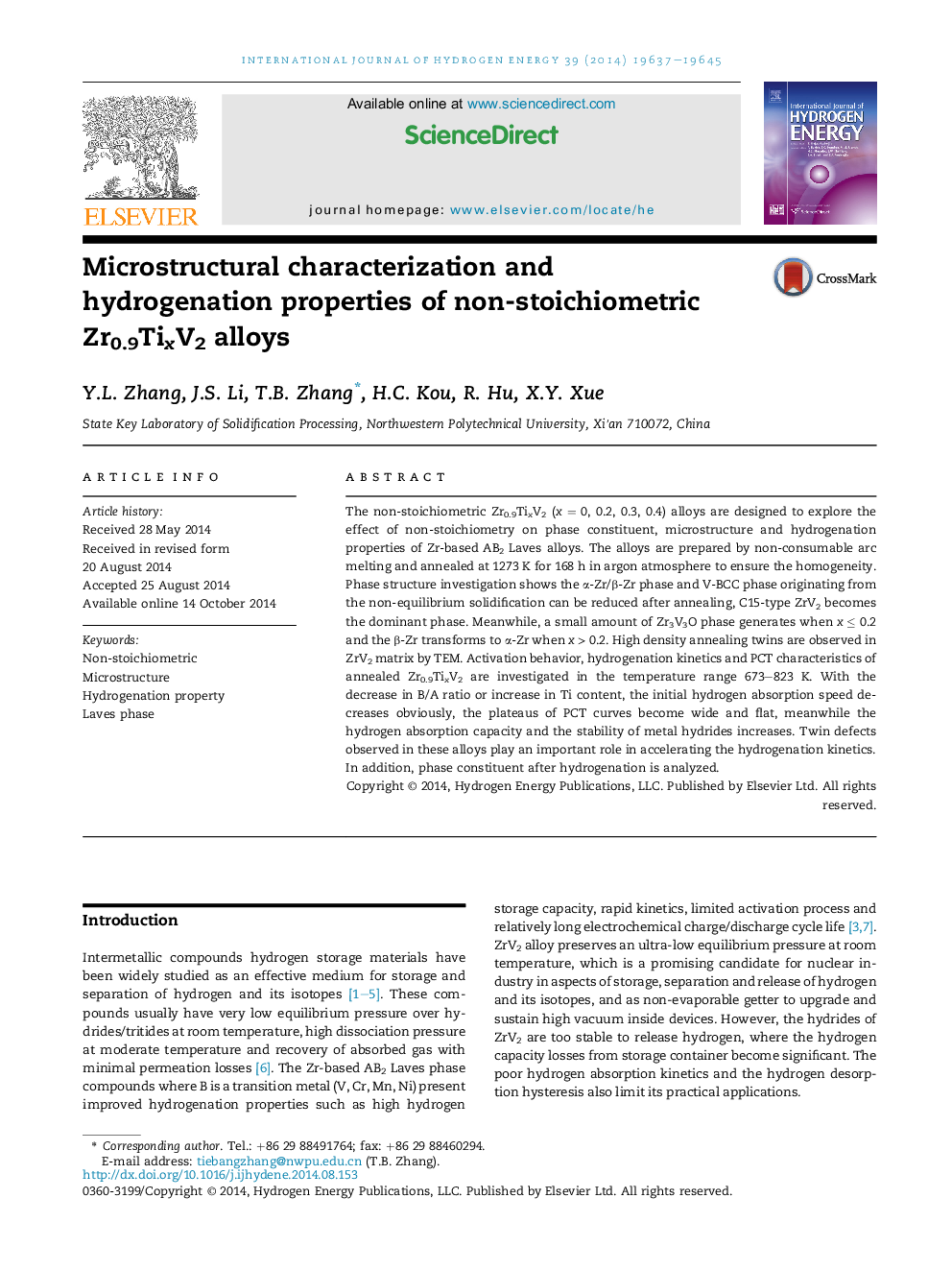| Article ID | Journal | Published Year | Pages | File Type |
|---|---|---|---|---|
| 1280715 | International Journal of Hydrogen Energy | 2014 | 9 Pages |
Abstract
The non-stoichiometric Zr0.9TixV2 (x = 0, 0.2, 0.3, 0.4) alloys are designed to explore the effect of non-stoichiometry on phase constituent, microstructure and hydrogenation properties of Zr-based AB2 Laves alloys. The alloys are prepared by non-consumable arc melting and annealed at 1273 K for 168 h in argon atmosphere to ensure the homogeneity. Phase structure investigation shows the α-Zr/β-Zr phase and V-BCC phase originating from the non-equilibrium solidification can be reduced after annealing, C15-type ZrV2 becomes the dominant phase. Meanwhile, a small amount of Zr3V3O phase generates when x â¤Â 0.2 and the β-Zr transforms to α-Zr when x > 0.2. High density annealing twins are observed in ZrV2 matrix by TEM. Activation behavior, hydrogenation kinetics and PCT characteristics of annealed Zr0.9TixV2 are investigated in the temperature range 673-823 K. With the decrease in B/A ratio or increase in Ti content, the initial hydrogen absorption speed decreases obviously, the plateaus of PCT curves become wide and flat, meanwhile the hydrogen absorption capacity and the stability of metal hydrides increases. Twin defects observed in these alloys play an important role in accelerating the hydrogenation kinetics. In addition, phase constituent after hydrogenation is analyzed.
Related Topics
Physical Sciences and Engineering
Chemistry
Electrochemistry
Authors
Y.L. Zhang, J.S. Li, T.B. Zhang, H.C. Kou, R. Hu, X.Y. Xue,
